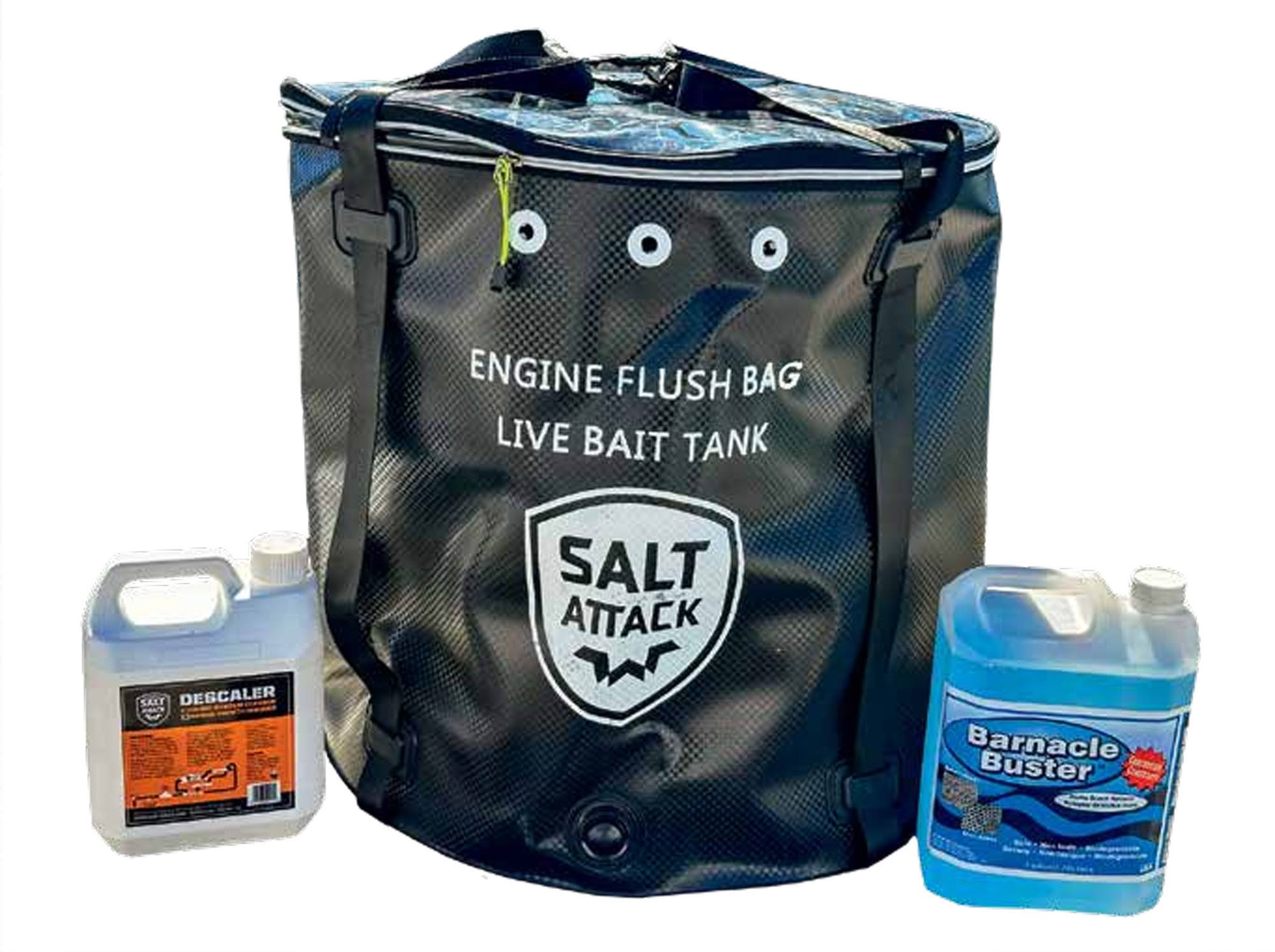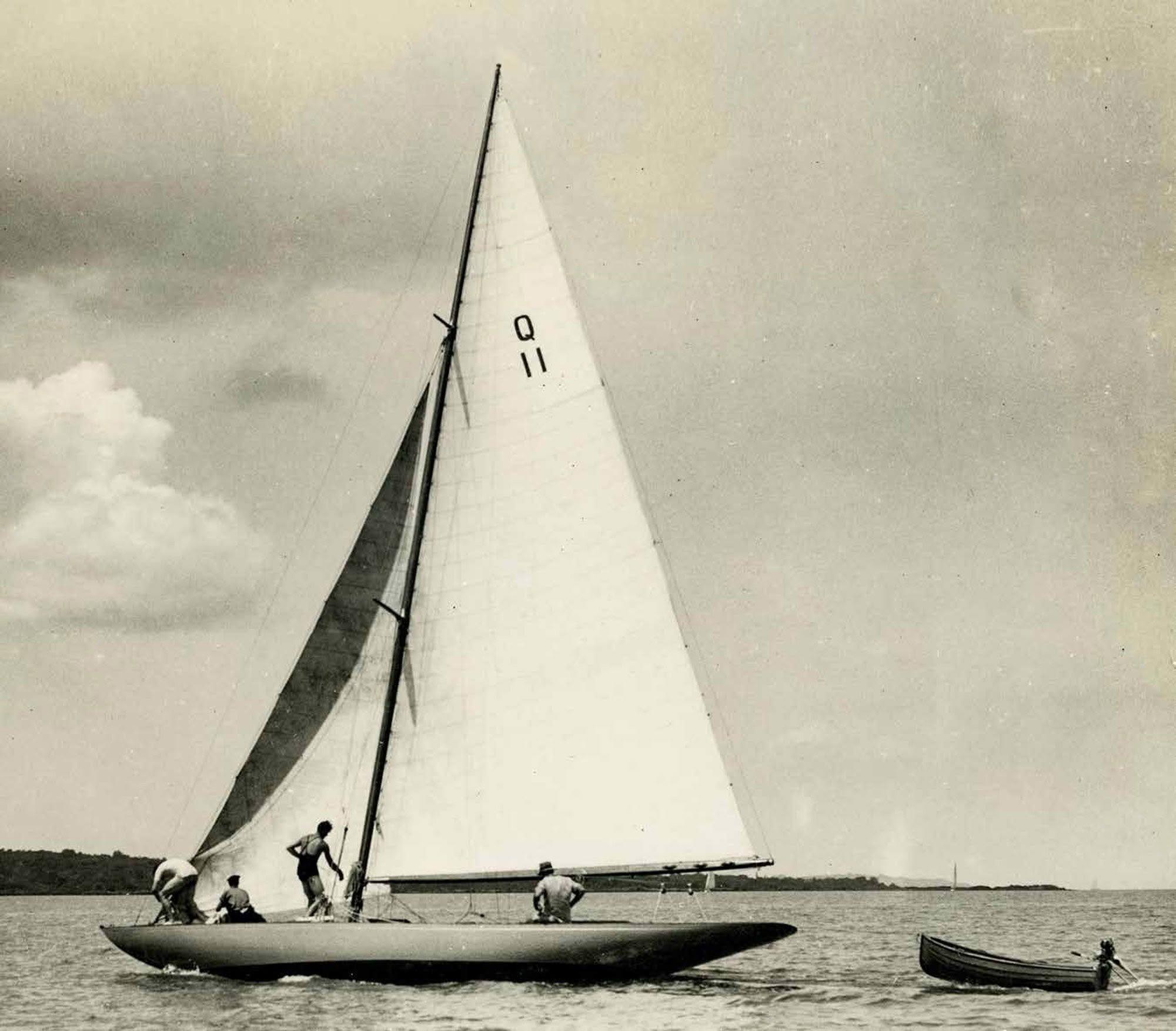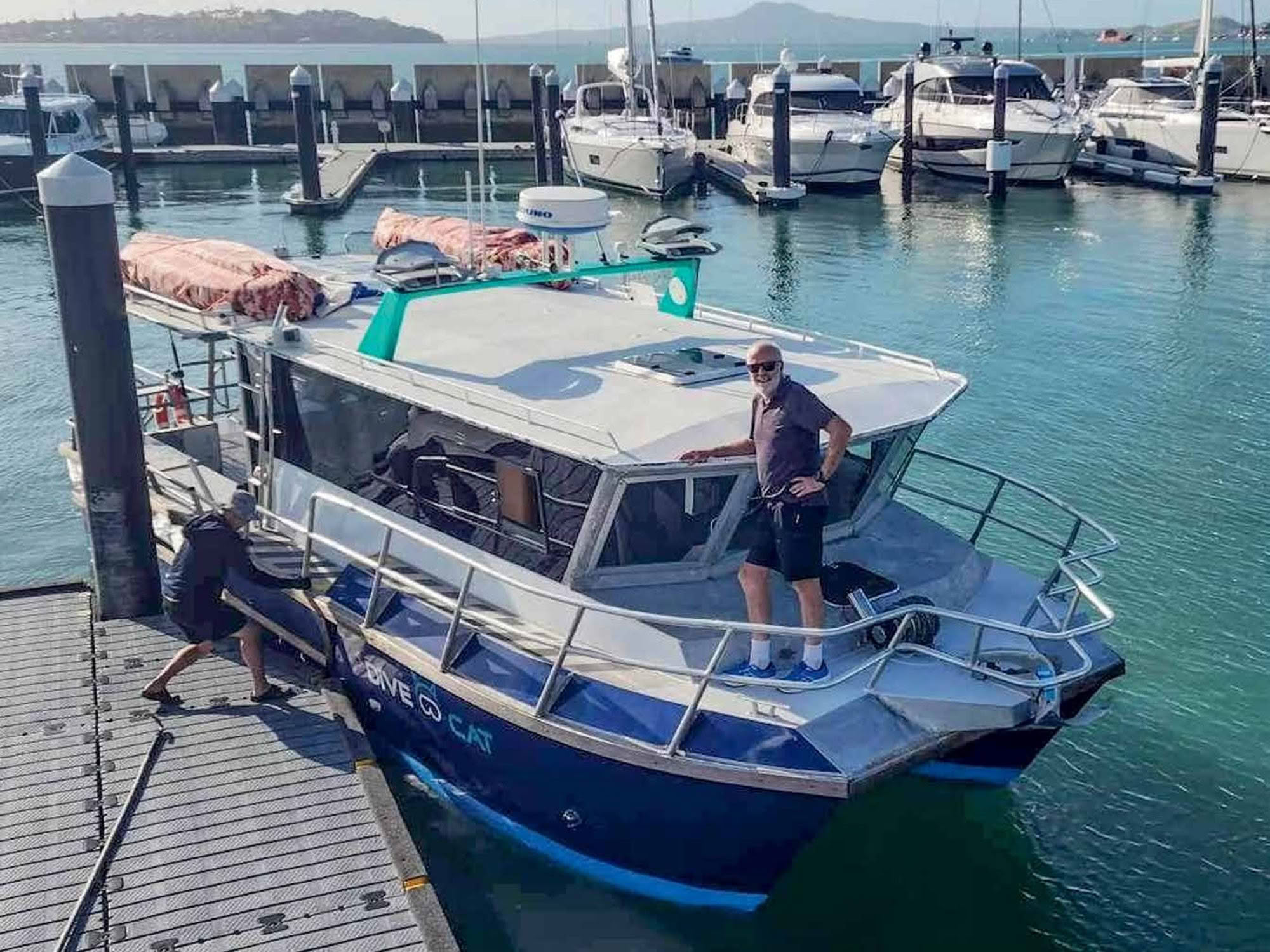

Whangamata-based master craftsman Harry Nordberg has resuscitated a 1962 Mason Clipper 23 – giving the 57-year-old dame the cosmetic surgery she needed and deserved, writes Roger Mills.
This boat has been restored for a client in Queenstown, and I caught up with Harry just before she was shipped south to her new owner. His involvement with the Mason Clipper goes back to 2016, when Harry was building a gleaming mahogany racer, Baby Thunder (featured in the May 2016 issue of Boating New Zealand).
A number of interested onlookers monitored Baby Thunder’s progress, and after a number of visits one of them said: “Harry, we have a nice, wee Clipper 23 which we want you to restore.” They agreed on a price and Harry was ready to start when the owner said he’d found a bigger Mason Clipper and the project was off!
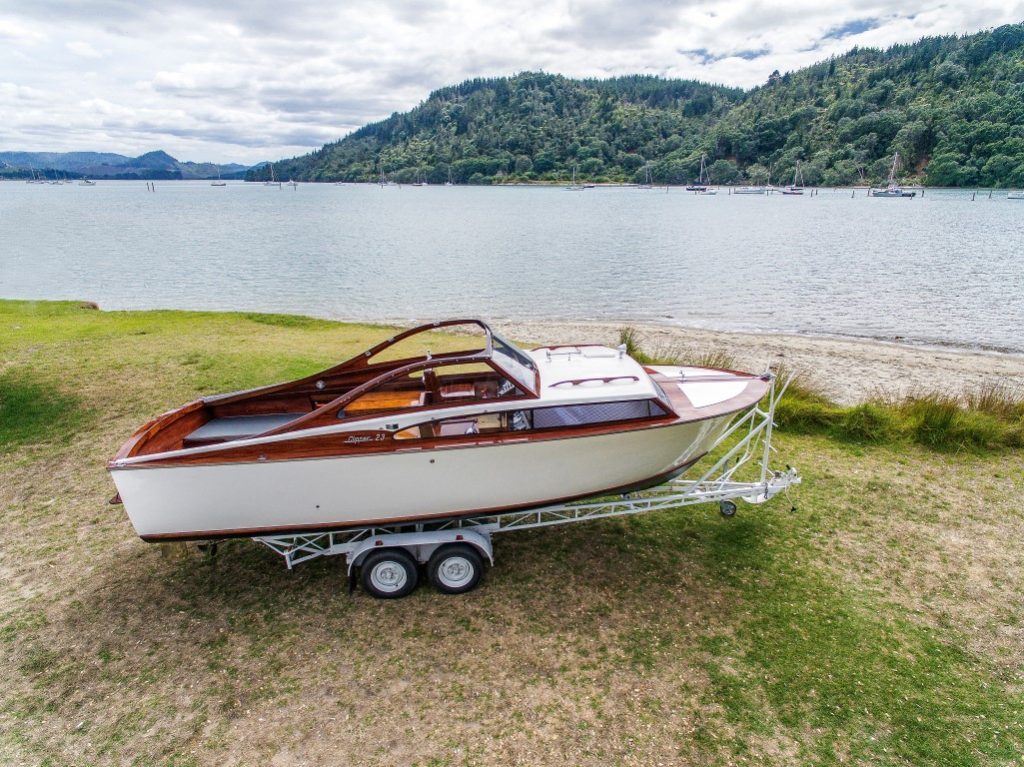
But Harry had already invested a fair amount of emotion in the project so he offered to buy the 23 and restore it. He received the boat in a very dilapidated condition, completely stripped. Most of the accessories were living in a large box of bits! The only functional thing was the trailer – the original – designed and built specifically for the boat. But Harry was undeterred.
“This particular Mason Clipper is unique because it’s a convertible,” he says. “Tony Mason made very few convertibles – a handful maybe – and this one is even more unique because
she’s equipped with twin Ford Intercepor V8 engines, with direct drives.”

An advertisement for the Clipper in an issue of Sea Spray magazine from the period described it as “The world’s finest power boat – for those people in the position to demand it.”
Work began in 2018, and Harry soon had an interested buyer. Within a week he negotiated a sale to deliver the restored boat to Queenstown in a year’s time – early 2019.
How does he feel about parting with her? “My pleasure comes from the challenge of building a project and of creating something beautiful, not just owning it.”
NUTS & BOLTS
‘Creating something beautiful’ is easier said than done.
Fundamental repairs included removing a small amount of rot from the transom and grinding away layers of delaminating fibreglass sheathing, to make way for new fibreglass.
Overall, though, says Harry, the cedar strip hull was pretty sound.
But piecing the rest of the jigsaw puzzle together proved quite a challenge. Explains Harry: “One engine spins left and the other right, and the same for the gearboxes – left and right. Fortunately, because the original engine mountings were left in the hull I could tell which engine was left and which was right.”
The engines badly needed a little TLC. They received new pistons and rings, and the cylinder heads were given a valve grind – all carried out by Whangamata Service Centre.
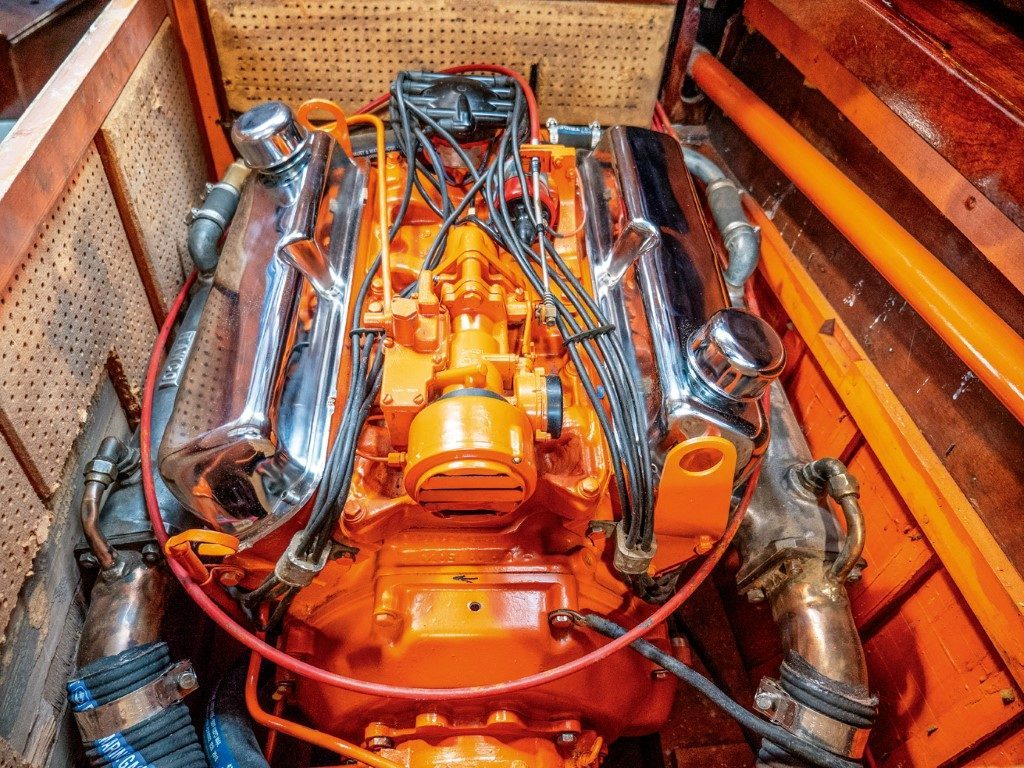
Many replacement parts were obtained via eBay. The starter motors were swapped for higher torque models, and the Dearborn Matic gearboxes received new seals.
Other engine work included new carburettor seals, new bellows for the petrol pump, rebuilt alternators, new water pump impellers and new electrics. When things got difficult, Harry resorted to fabrication from scratch – such as the one oil cooler.
Things didn’t always progress smoothly. When one of the engines was being bench-tested it spewed a fountain of oil across the workshop. Harry traced the problem to a sticky oil pressure valve. A quick disassembly and a clean of the valve needle sorted the problem.
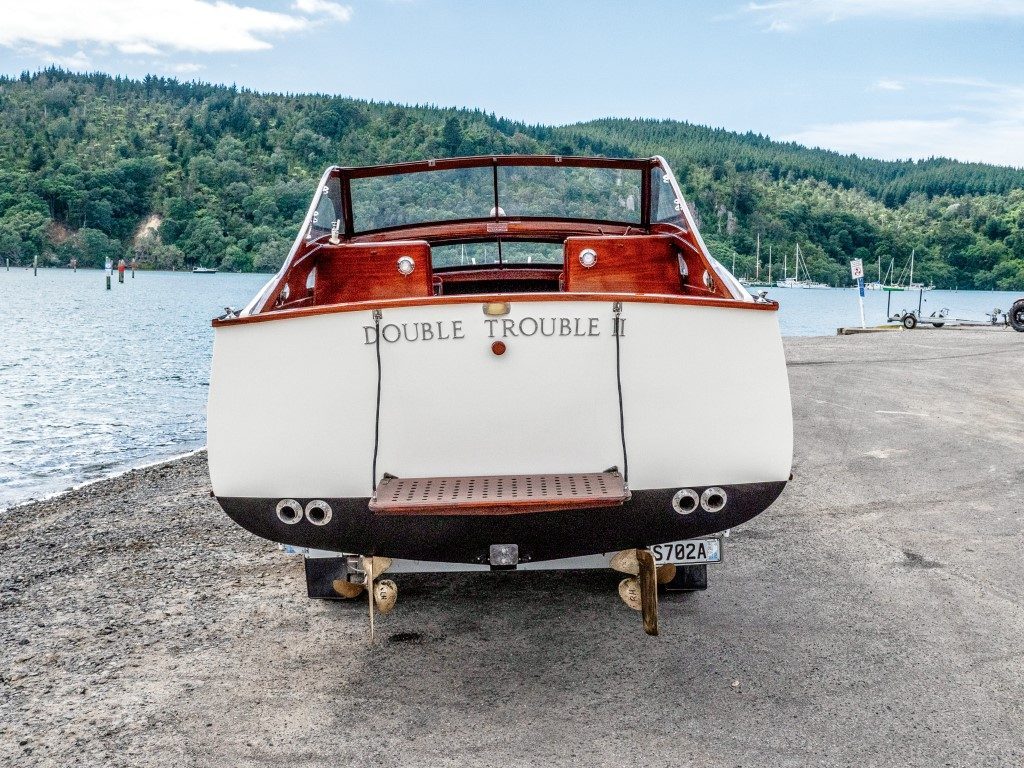
Because they had been pitted by electrolysis, the props were re-balanced (by Bri-Ski) and Harry ensured there would be no future corrosion problem by installing wire brushes on the shaft and connecting them electrically to the zinc anode.
TIMBER & UPHOLSTERY
This Clipper 23 has a convertible roof, which takes about five minutes to erect. The new
canvas was made by Whangamata Upholstery. The front deck is new mahogany, sourced from Timspec in Carterton. Harry cut it into 4.5mm-thick pieces and sanded it back to 4mm.
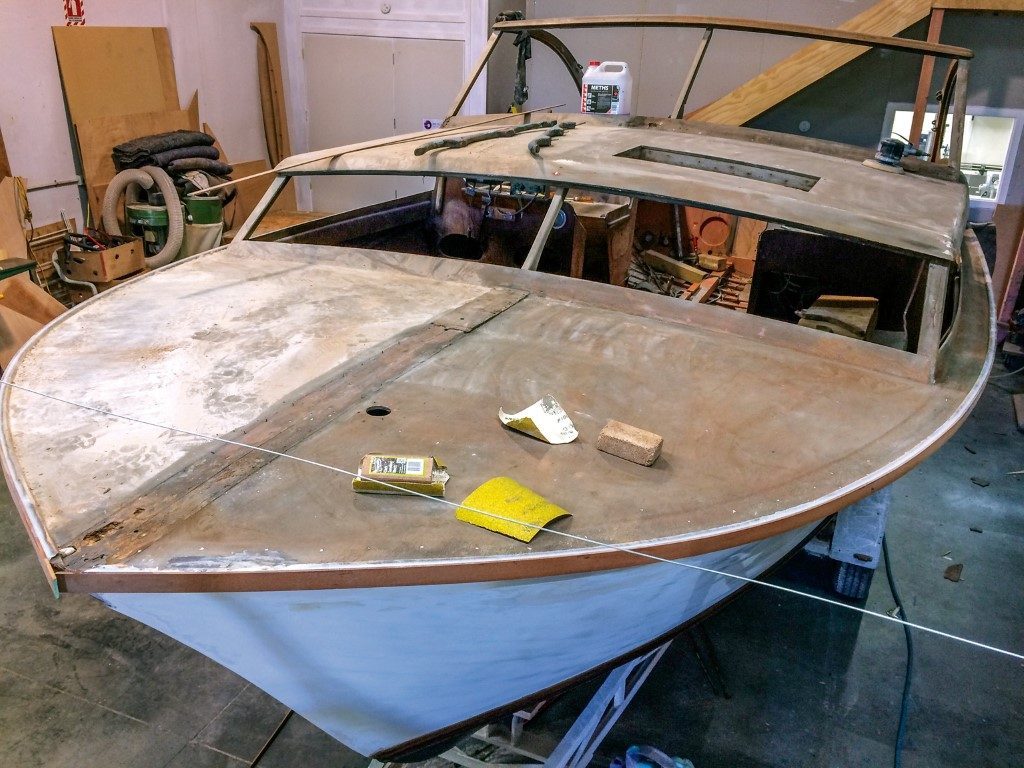
He also spent a lot of time getting the windows right. “The original windows came with rubber surrounds and a double groove, one over the plywood and one over the glass. But I wasn’t happy with the way it looked so I created rebates for all the windows. To achieve this I used new mahogany – inside and outside – 4mm thick over the original ply. Probably an extra month’s work,” he says wryly.
The boat’s dash is original. It was disassembled and carefully cleaned with meths and Q tips. But one of its vacuum gauges was dead and needed replacing. The perfect substitute just happened to be in a mate’s truck that was being restored. As it wasn’t original to the truck, Harry simply bought his mate a new, readily-available alternative. That’s what friends are for!

Because the diamond-shaped upholstery material on the ceilings is no longer available, Harry sourced something very similar. The original was imprinted with heat but the replacement is stitched and matches well.
The original boat had two, kidney-shaped triangles on the foredeck, which Harry recreated. “I could see the faint outlines in the plywood so I traced them and made painted plywood panels.”
How he felt about covering up that beautiful mahogany of the foredeck? “The new owner wanted it as original as possible,” says Harry, as matter-of-fact as ever.
The hull is painted the original oyster white using Carboline paint. Six undercoats and six topcoats, with a lot of long-boarding in between. The varnish is also a Carboline product with Harry using a slight stain on the old timber to match it to the new.

The only concession to the original vessel is in the name. She was called Sundancer but the new owner already knew a boat with that name – so he chose Double Trouble II.
The hardest part of the project? “Time!” says Harry, though I suspect that is the catch-cry of a perfectionist.
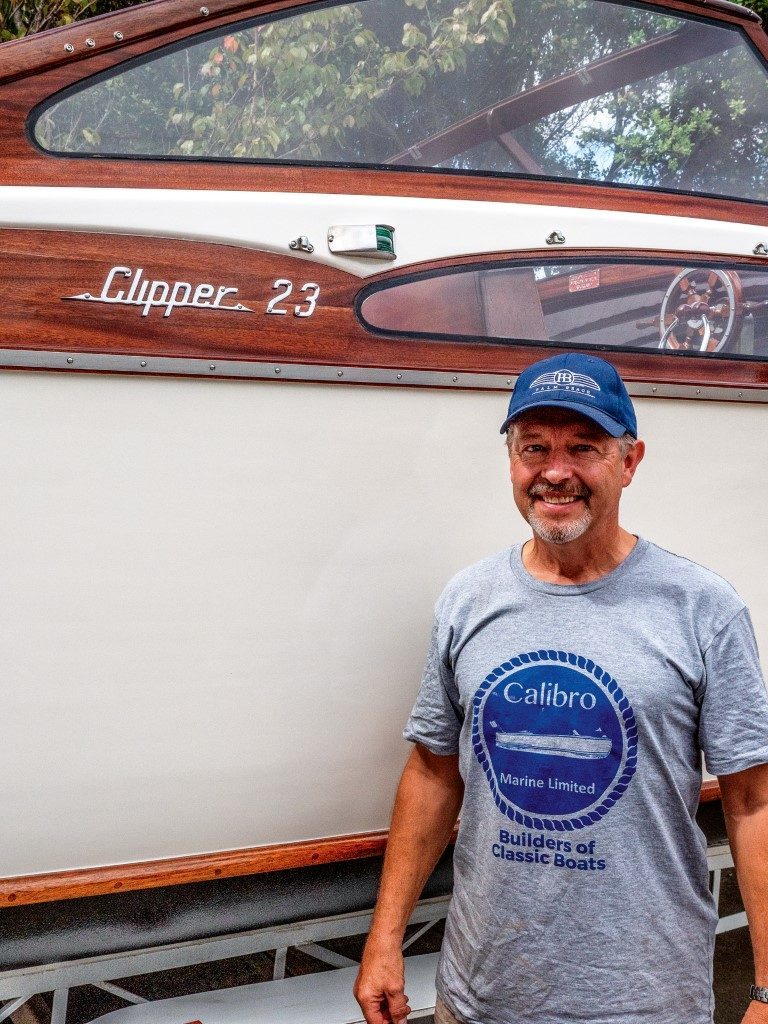
And what about the other Mason Clipper tucked into the corner of Harry’s workshop? “My next project, a Sports Clipper, exactly the same hull, but different top.”
All he needs to do is find another happy client which, judging by his past success, won’t take long at all.


